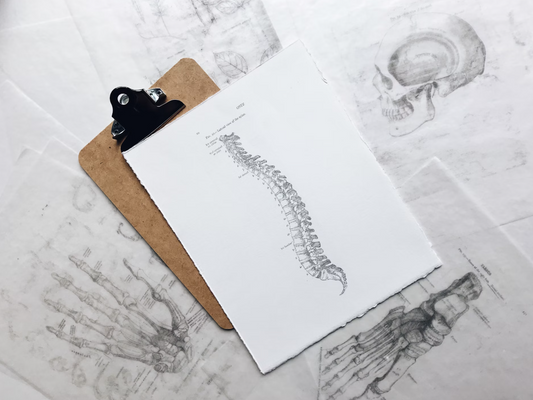When we think about cardiovascular health, we often focus on diet, exercise, and medications. However, one of the most powerful tools for improving heart health and regulating blood pressure is often overlooked: the way we breathe. Our breathing patterns not only impact the amount of oxygen we take in, but they also play a significant role in regulating blood pressure and maintaining overall cardiovascular health.
In this article, we will explore how different breathing patterns affect our heart health, the science behind these effects, and simple techniques you can use to support a healthy cardiovascular system through mindful breathing.
The Connection Between Breathing and Blood Pressure
Breathing has a direct impact on our autonomic nervous system (ANS), which controls involuntary bodily functions such as heart rate, digestion, and respiratory rate. The two branches of the ANS—sympathetic (fight or flight) and parasympathetic (rest and digest)—work together to regulate our body’s response to stress, relaxation, and overall balance.
-
Sympathetic Nervous System: When we experience stress, our sympathetic nervous system is activated. This triggers the "fight or flight" response, causing our heart rate to increase and blood vessels to constrict, which can raise blood pressure.
-
Parasympathetic Nervous System: In contrast, when the parasympathetic nervous system is activated, it promotes relaxation. This decreases heart rate, dilates blood vessels, and lowers blood pressure.
Certain breathing patterns have the power to activate the parasympathetic system, helping lower blood pressure and supporting heart health. Conversely, shallow, rapid breathing can lead to increased sympathetic activity, which may contribute to elevated blood pressure.
How Different Breathing Patterns Affect Cardiovascular Health
- Deep Breathing and Blood Pressure Reduction
Deep, slow breathing—also known as diaphragmatic or abdominal breathing—has been shown to lower blood pressure by stimulating the parasympathetic nervous system. This type of breathing involves using the diaphragm, allowing for a full inhalation that promotes relaxation and blood vessel dilation.
Research suggests that deep breathing exercises can help reduce the physiological effects of stress on the body, which in turn lowers the risk of chronic conditions like hypertension (high blood pressure) and heart disease.
- Slow, Controlled Breathing and Heart Rate Variability
Heart rate variability (HRV) refers to the variation in time between each heartbeat. A higher HRV is generally associated with better cardiovascular health, as it indicates that the heart is able to respond flexibly to stress and recovery. Slow, controlled breathing techniques have been shown to improve HRV, which can help reduce the risk of cardiovascular events.
For example, slow, rhythmic breathing with extended exhalations (such as 5-6 seconds of inhale and 7-8 seconds of exhale) can enhance HRV by fostering a balance between the sympathetic and parasympathetic systems. This helps regulate heart rate and contributes to more stable blood pressure.
- Shallow, Rapid Breathing and Increased Blood Pressure
Conversely, shallow and rapid breathing, commonly referred to as chest breathing, can activate the sympathetic nervous system. This leads to an increased heart rate and elevated blood pressure, particularly when experienced over prolonged periods of time. People who experience chronic stress or anxiety may tend to breathe rapidly and shallowly, which can exacerbate hypertension and contribute to cardiovascular strain.
When we breathe shallowly, the body’s oxygen levels decrease, and carbon dioxide levels increase, triggering the release of stress hormones such as cortisol. These hormones contribute to narrowing of the blood vessels and the elevation of blood pressure, creating a cycle that can negatively impact heart health.
Breathing Techniques to Support Cardiovascular Health
Incorporating mindful breathing into your daily routine can be a simple yet effective way to improve your cardiovascular health. Here are some techniques that have been shown to benefit blood pressure and heart function:
1. Diaphragmatic Breathing (Belly Breathing)
This technique encourages deep, slow breathing that fully engages the diaphragm, allowing for improved oxygenation and relaxation.
How to do it:
- Sit comfortably or lie down with your back straight.
- Place one hand on your chest and the other on your abdomen.
- Breathe in deeply through your nose, allowing your abdomen (not your chest) to rise as your diaphragm moves downward.
- Exhale slowly through your mouth, allowing your abdomen to fall.
- Repeat for 5-10 minutes daily to stimulate the parasympathetic nervous system and promote relaxation.
2. Box Breathing
Box breathing, also known as square breathing, is a technique used by athletes, military personnel, and those seeking stress relief. It helps regulate heart rate and blood pressure by focusing on the length and rhythm of the breath.
How to do it:
- Inhale slowly for a count of four.
- Hold your breath for a count of four.
- Exhale slowly for a count of four.
- Hold your breath out for a count of four.
- Repeat for several minutes to increase HRV and lower blood pressure.
3. Alternate Nostril Breathing
A yoga practice known as Nadi Shodhana, alternate nostril breathing helps balance the nervous system, calm the mind, and reduce blood pressure. This technique has been shown to improve heart rate variability and relax the body.
How to do it:
- Sit comfortably with your spine straight.
- Using your right thumb, close your right nostril.
- Inhale deeply through your left nostril.
- Close your left nostril using your right ring finger, then exhale through your right nostril.
- Inhale deeply through your right nostril, then close the right nostril and exhale through the left.
- Repeat for several rounds, alternating nostrils with each inhale and exhale.
The Long-Term Benefits of Mindful Breathing for Cardiovascular Health
Incorporating mindful breathing into your routine is not just about short-term relaxation—it can have lasting benefits for heart health. By regularly practicing deep, controlled breathing techniques, you can:
- Reduce stress: Mindful breathing helps decrease the release of stress hormones like cortisol, which are linked to high blood pressure and cardiovascular disease.
- Lower blood pressure: Deep breathing stimulates the parasympathetic nervous system, which helps relax blood vessels and lower heart rate.
- Improve heart rate variability: Breathing exercises help improve the flexibility of your heart’s response to stress, reducing the risk of heart disease.
- Boost overall well-being: Breathing techniques promote relaxation, better sleep, and improved energy levels, all of which contribute to a healthier heart.
Conclusion: Breathing Your Way to Better Heart Health
Breathing is a powerful, yet often underestimated, tool for regulating blood pressure and supporting cardiovascular health. By understanding how different breathing patterns influence the autonomic nervous system, we can use simple techniques to activate the parasympathetic system, reduce stress, and lower blood pressure.
Incorporating deep breathing exercises into your daily routine is a simple and effective way to take control of your heart health and improve overall well-being. With consistent practice, you can breathe your way to a healthier heart and a more balanced life.




